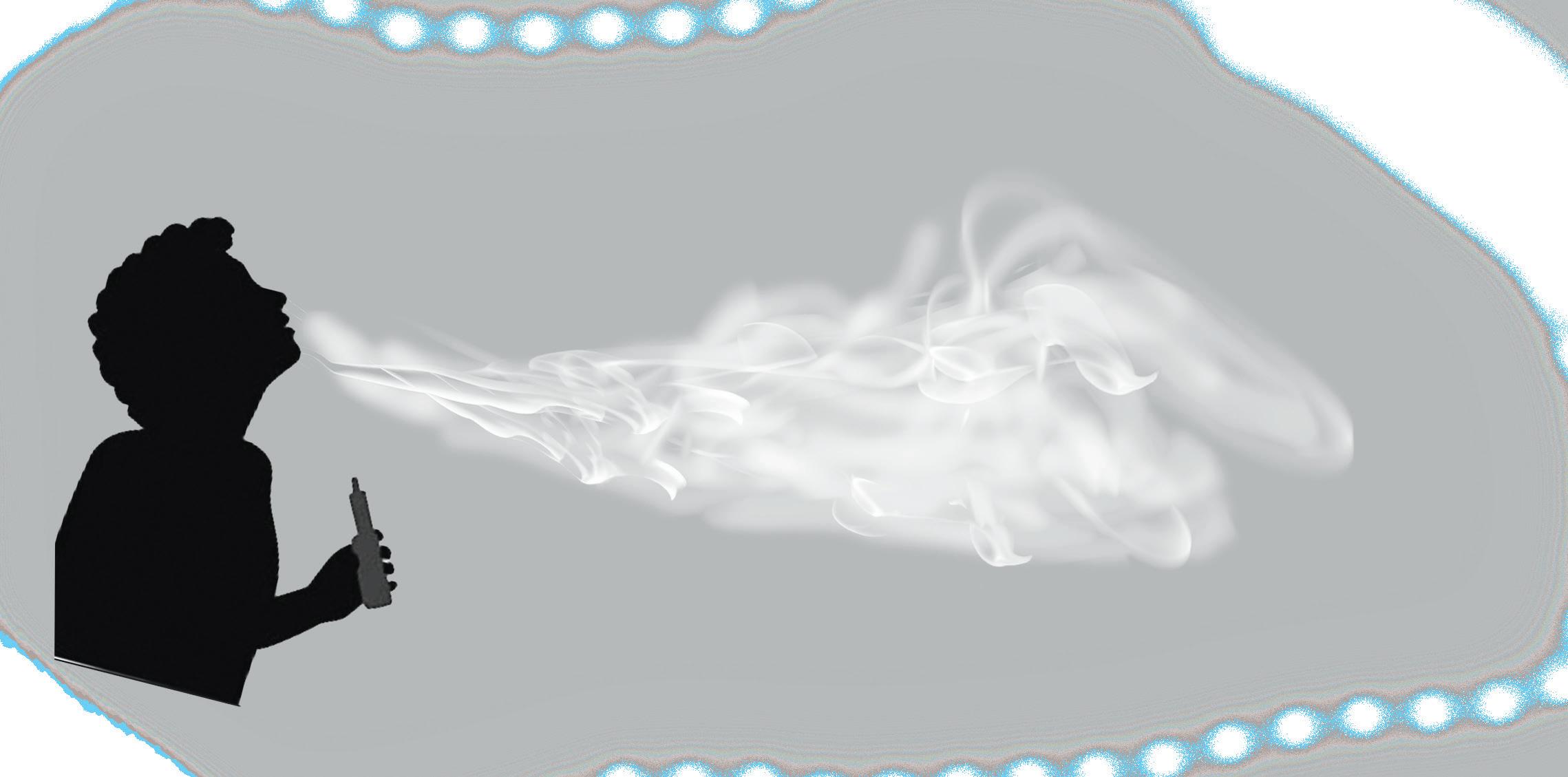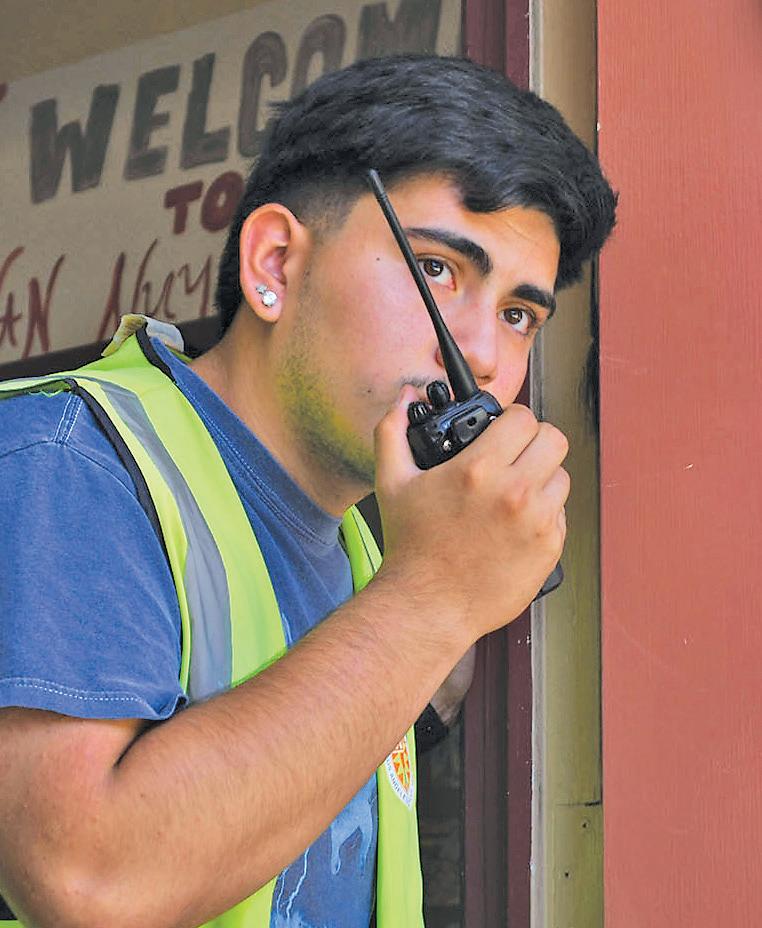
3 minute read
E-cigarettes: An adolescent epidemic
BY DELMIS VAQUERANO
THE MIRROR STAFF
Advertisement
As the bell rings for lunch, you rush to the nearest restroom and as you arrive, a line of people are waiting for an available stall.
Impatiently, you notice that the stalls are occupied by people unwilling to budge, people who seem to be hiding from school staff.
Vapor floats out of the occupied stalls, filling everyone’s lungs with toxins and leaving a lingering sweet odor in the air.
Senior Tieara Johnson explains that seeing students vaping in school is a daily occurrence.
“I see it every day, usually in the bathrooms,” she said. “Vapers are just all around the campus.”
The rapid increase in juvenile e-cigarette use in 2018 led the Federal Drug Administration (FDA) to label the use of e-cigarettes among youth as an epidemic with no signs of waning.
According to the Truth Initiative, the 2022 Annual National Youth Tobacco Survey found that 2.12 million high school and 380,000 middle school students report ongoing use of e-cigarettes.
The rise of e-cigarette use in adolescents is attributed to tobacco companies that target teenagers through marketing strategies such as broadcasting their products on social media platforms and mobile apps, as well as displaying their products as being similar to food items.
Adolescent use of e-cigarettes or vapes puts users at risk of irreversible brain damage from nicotine into any legal trouble.”
Araujo also noted that it’s not impossible for someone to breach the campus’s perimeter without anyone knowing. Even though the most populated areas on campus are patrolled frequently, there are not enough aides to cover the entire campus
“Because this is a bigger campus, there’s a lot of ways to get in and out of this place without anyone knowing,” Araujo said. “Anywhere where there’s a fence and it’s patrolled less, it’s easy access.”
Math teacher Mr. Colin Rabago noted that teachers have received specific training on what to do in case of a lockdown. Teachers are supposed to make sure all students find cover indoors and instruct them to stay away from all windows and doors. They are instructed to use tables and chairs to block off potential entrances to their rooms. If the situation escalates, teachers can relocate students as well. Additionally, teachers have smartphone group chats to communicate with each other in case of an emergency.
“We had a couple of trainings last year in person by LAPD officers, given to teachers about what to do in these kinds of situations, and then we also have virtual trainings on these situations when you’re training to be a teacher, too,” Mr. Rabago said.
Nevertheless, all three believe that having a stronger school police presence on campus would increase everyone’s safety. The school has had numerous police officers patrolling the school after incidents like the toy gun threat; currently, however, only a single officer is sporadically sent once or twice a week to keep an eye on the campus. A more permanent posting is imperative.
“You need to have a police officer on campus,” Mr. Rabago said. “It would make families feel more safe.”
More comprehensive training for staff, a stronger perimeter and increased efforts to build a secure school environment are ways to help create safety for everyone on campus. Because financial resources are limited and vary from district to district, however, the best solution might be to raise more awareness about how prevalent school shootings have become in America.
“School shootings happen every day,” Araujo said. “Every day, there’s a shooting that you don’t even know about. There’s probably a shooting right now. It’s a little bit too normalized, and one could happen at any time.” exposure, as this may affect learning and concentration skills. It also puts users at an increased risk for longterm health issues such as mood disorders, cardiovascular disease, lung disease, seizures and more.
To mitigate the frequency of vaping on campus, particularly in the restrooms, adult supervisors are assigned to oversee the inside and outside of a restroom reflec- tive of their gender.

Supervision Aid Mr. Luis Cornejo notes how the use of e-cigarettes among students is out of hand.
“It’s uncontrollable,” he said.
Led by District Facilitator Mr. Daniel Umanzor, Tobacco Use Prevention Education (TUPE) sessions are held weekly on Thursdays afterschool to educate students about the dangers of drug usage. Students collaborate to create and lead campaign events every month to advocate healthy lifestyles and spread awareness.
Students referred to TUPE by administrators have to complete a fixed amount of hours. .
Mr. Umanzor expresses that TUPE has been effective for students that seek help and are willing to put in the effort to change.
“I’ve seen a lot of kids come to meetings with their friends or peers that would go out of their way to speak with other students at events,” he said. “They’re really what’s going to change the stigma against AntiTobacco programs.”
For services and information about quitting vaping, contact the Substance Abuse and Mental Health Service Administration at www.samhsa.gov or call 1-800-662-4357.










